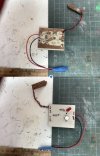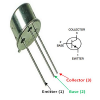I got this in the long ago mists of time and presumably stripped it out as things were not working. Somewhere a sensor has gone missing but nothing occurs when one puts a battery on and short the two wires on the sensor board. Any adeas what it could be useful for now or should I just strip out the components and put them in my bits boxes?



